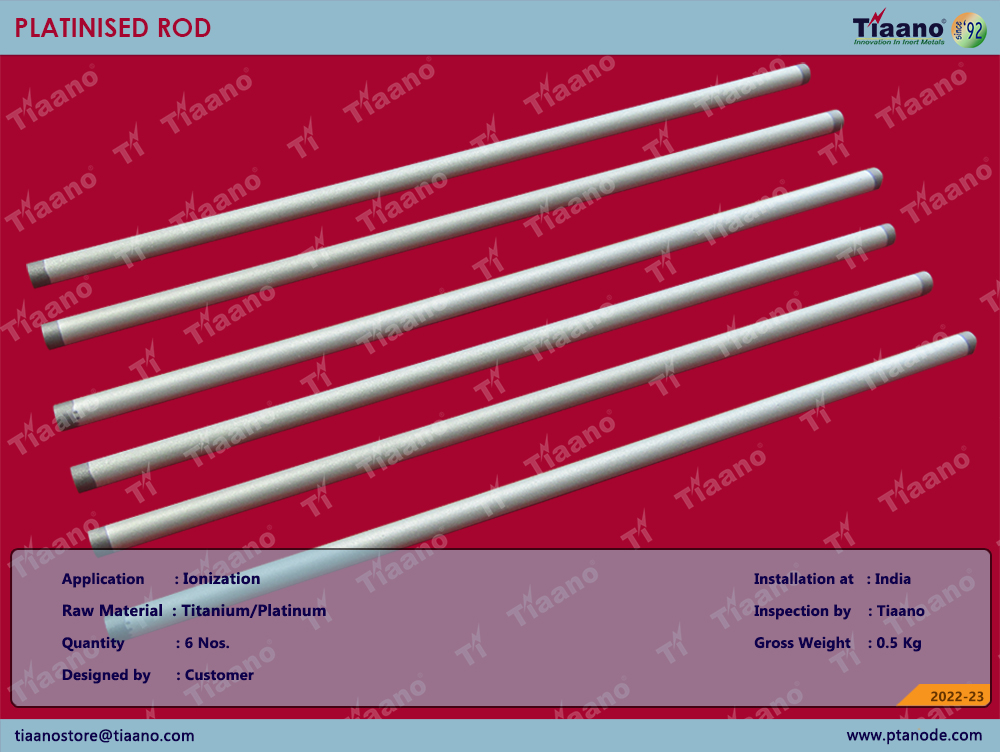PLATINISED ROD FOR IONIZATION PROCESS
May 24, 2022 at 6:11 PM
—
admin
The vital variable for a quality water ionizer is the material of the electrode (Platinised Anodes and Platinised Cathodes). Most great ionizers available use anodes made of platinum plated with grade 1 titanium. Titanium won't break up in your ionized water.
How does a basic water ionizer work?
A water ionizer deals with the straightforward standard of electrolysis. Any sort of water ionizer has two terminals put into a holder having two chambers isolated by a semi-porous film. The two terminals - positive and negative, are placed into two separate chambers and current (4 Volt for every cell) is gone through them. Ionization process happens on passing of the ongoing through the terminals. The disintegrated minerals get drawn in either to the positive or negative terminal and gets adhere to their surfaces. Accordingly one of the chambers will have acidic water while the other will have antacid water. The basic water is for utilization reason, though the acidic water is for cleaning or disinfecting purposes.
Anode Side: Platinum Plated Titanium Anode:-
Emphatically charged particles accumulate at the negative terminal to make diminished water, which concentrates accessible antacid minerals, for example, calcium, magnesium and potassium from the source water. This soluble ionized water is drawn for drinking and cooking, through the really tempered steel ramble.
Cathode Side: Platinum Plated Titanium Cathode:-
Adversely charged particles accumulate at the positive cathode to make oxidized water, which concentrates corrosive minerals like nitrates, sulfides, chlorides, and fluorides from the source water. This corrosive ionized water has a horde of outer purposes. It is released into the sink.
Platinized Titanium & Niobium Anode (Dimensionally Stable Anode)
